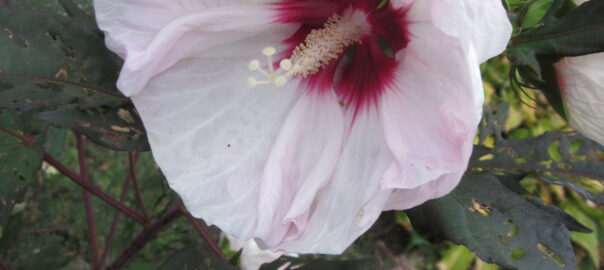
This summer’s unusually high temperatures, following months of below-normal rainfall, have resulted in significant drought areas in the Greater Boston Area and beyond.
Although we’ve not wanted to waste water on our so-called lawn, we’ve tried to keep our gardens watered, especially those where some of our “special trees” are growing-such as the Kousa dogwood (Cornus kousa), the Seven-Son Flower Tree (Heptacodium miconioides), and the Japanese Umbrella Pine (Sciadopitys verticillata).
Incidentally, the latter is not a true pine tree. We’ve been told that they’re so unique that they are the only members of their horticultural family and genus.
However, the seemingly millions of “not-welcome-at-all” crabgrass weeds and the Virginia creeper vines have grown and flourished like never before!
Because they prefer dry conditions, right now the beautiful Russian sages (Perovskia) with their lush lavender-blue sprays and the sedums with their pink flowers are doing very well. They are bumblebee and honeybee magnets, for sure.
But this year’s outstanding performance award goes to the hibiscus moscheutos ‘Kopper King’. This hardy specimen multi-branch shrub emerges late in the season and will bloom off-and-on until frost, gifting us with glorious large hollyhock-like white flowers with red centers and pink/red veined ruffled petals. These beauties are also called rose, swamp or crimson-eyed mallows.
Their copper colored foliage is most attractive even though this summer there has been quite a bit of hibiscus sawfly damage. These rascally insects ultimately consume every part of the leaf except the veins, resulting in a lacy appearance, which some gardeners find attractive.
Looking ahead, I am told that The Farmers’ Almanac is forecasting “a wintry mix of rainy, icy and/or snowy weather” for New England this coming winter. So maybe I won’t complain too much right now!

